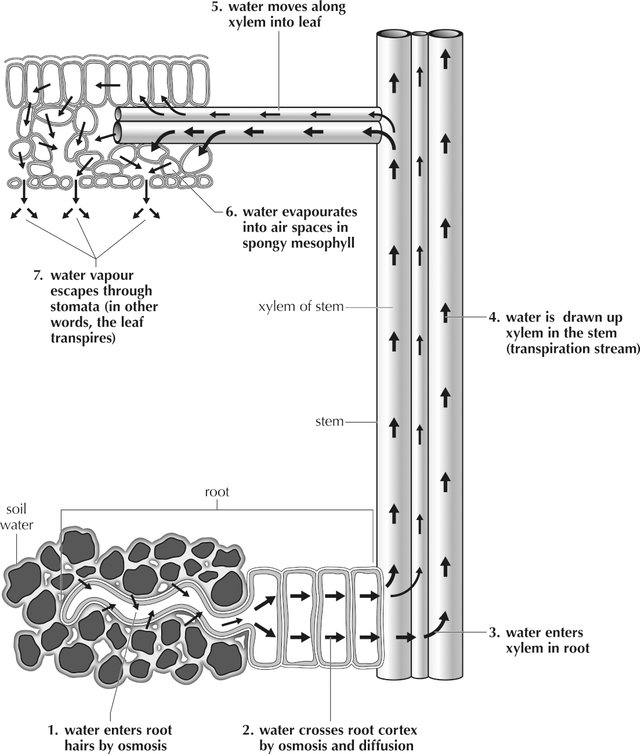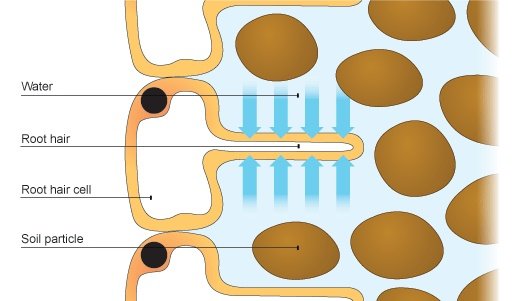The function of the roots of the plants is to anchor the plant body in the soil and absorb the minerals and water from the soil. Carbon dioxide, minerals and water are the three type of nutrients required by the plants to carry out photosynthesis. In order to get these materials, roots must provide large surface area for absorption and it is achieved by extensive branching.
 image source
image source
The roots contain a dense cluster of tiny hair like structures which are usually extensions of epidermal cells of roots. For example, a rye plant which is less than one meter tall has around 14 million branch roots which have combined length of over 600 kilometers. These are root hairs which are actually the sites where most of the water and mineral uptake takes place. According to an estimate by scientists, out of total surface area provided by roots, 67% is provided by root hairs.
Plants synthesize all their required food with the help of water and minerals from soil, carbon dioxide and light. Most of the minerals enter through root hairs of the roots along with water in bulk amount. Some of the minerals are also taken in by diffusion and active transport.
The minerals which are available to plants for absorption are dissolved in the soil water. The concentration of minerals vary according to the fertility and acidity of the soil along with other factors.
 image source
image source
The uptake of minerals by root cells is combination of active uptake and passive uptake and involves the use of energy in ATP form. The passive uptake involves diffusion. The minerals also move down their concentration gradient through plasmodesmata to cells of cortex, endodermis, pericycle and then up to sap in xylem cells. Then they are pulled up by transportation pull to different parts of the plant.
 image source
image source
The diffusion of ions along with water also takes place by mass flow along with apoplast pathway. Ions moving in the apoplast can reach through endodermis where casparian strips prevent further progress. In order to cross the endodermis, ions must pass by diffusion or active transport into endodermic cells, entering their cytoplasm and possibly their vacuoles. These ions then reach xylem cells. Diffusion of ions also takes through vacuolar pathway.
Most of the ions are taken up by roots by active transport. In this process, plants can take a mineral with higher concentration inside the root cells than in soil solution. The molecules and ions move from their low concentration to higher concentration through cell membrane with the help of ATP.
Active transport is selective and depends on respiration. Some ions move by both active and passive transport.





Your blogs are really full of knowledge. Our kids will really need to read it all. School teachers doesn't teach kids that deeply.
Are you a science teacher?
Thank you for your appreciation. I am engineer and I love to write about science and nature.
Global warming has affected tree uptake of minerals the most..and no one is looking to fix it..pathetic..
if you want me to resteem your post to over 72,500 followers go here https://steemit.com/@a-0-0